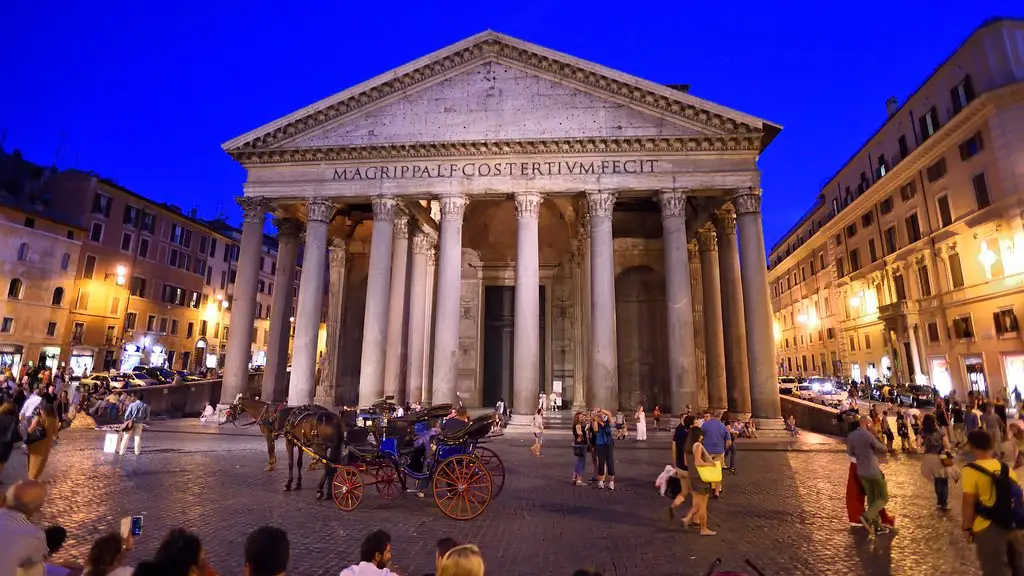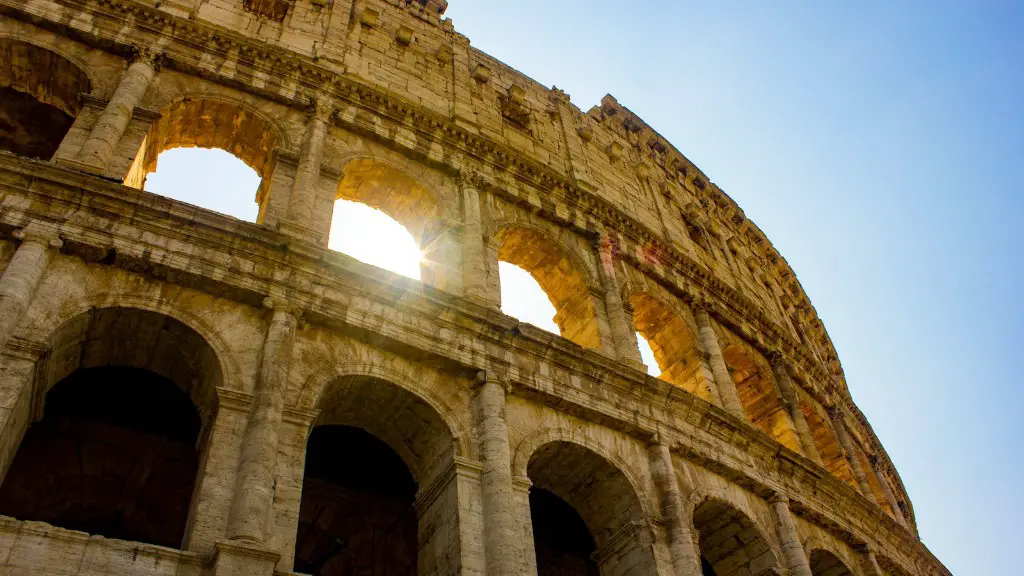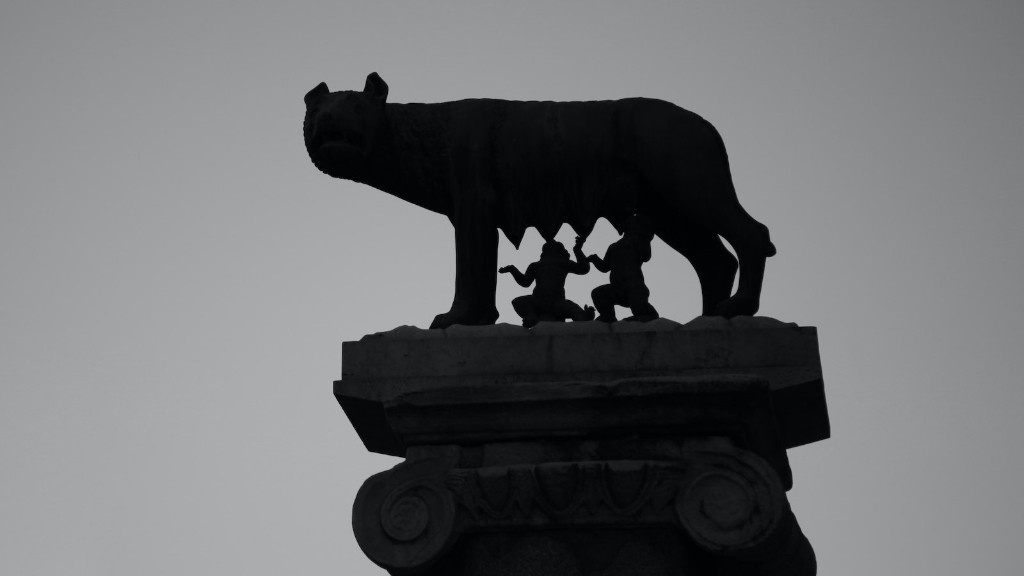Population and Societal Structure
Plumbing in Ancient Rome began around 800 BC, according to archaeological records. Rome, the capital of the Roman Empire, was known for its advanced infrastructure that extended over much of the known world. It was a bustling city with a population of about one million people backed by an impressive agricultural base. The Roman Empire was impressively organized, its people lived in organized city-states with a centralized bureaucratic system and political structure. With such a large population, it became necessary to have an adequate water supply and sanitation system that would keep the city clean and healthy.
Technology
Roman engineers had to come up with innovative ways to pipe in a sufficient and safe water supply for the city and its people. As the population increased, the need for plumbing increased too. Roman engineers developed a remarkable system for the time. They used a combination of aqueducts and lead pipes to bring fresh water into the city and sewage pipes to take wastewater out of the city. This was highly advanced technology for the ancient world and showed the Romans’ immense engineering knowledge and skill.
Aqueducts and Lead Pipes
The aqueducts were built by the Romans to bring in fresh water from the various mountain and river sources to the city with great speed and efficiency. The aqueducts were more than a thousand miles long and included bridges, tunnels, and canals. The system was such that the water ran in a cascading manner and this gave the system a lot of power. The lead pipes on the other hand, were used to conduct the water from the aqueducts to the public baths and other public places in the city. The pipes were made tightly fitting, so that no water was lost in transit and all of it could be used for public use.
Public Baths
Public baths were one of the main public services provided by the Romans, and most of the water was used for bathing. The water from the aqueducts and lead pipes was brought into the city, and the public baths were built adjacent to the aqueducts so that the water could be used efficiently. The baths were beautifully constructed and had a variety of chambers and pools. The bathing process was a luxurious experience with lounges and warm, scented water. This was all possible due to the advanced plumbing system that was setup in Ancient Rome.
Water Reuse
The Roman’s were also highly advanced when it came to water reuse. The water from their public baths was recycled and reused to irrigate their fields and gardens and to power their hydraulic machines such as water wheels and pumps. This was a great way to conserve water and also keep their gardens green and lush.
Prosperity and Growth
The Romans had a great passion for achievements and progress, and the plumbing system in Ancient Rome contributed significantly to their prosperity and growth. It allowed them to provide the most basic needs of their population, and by doing so, provided for an increased quality of life for the people of Rome. It also allowed them to expand their city and its infrastructure and build many more public works such as their famous public baths.
Impact on Modern Civilization
The plumbing system of Ancient Rome was highly influential and has been studied extensively since. Today, modern cities around the world use advanced plumbing systems that are based on the same principles as the Roman system, just much more advanced. This is a testament to the greatness of the Roman empire and its achievements.
Preservation of Ancient Knowledge
The Roman plumbing system was a marvel to behold and much of the knowledge and techniques used by the Romans have been preserved to this day. Through archaeological research, various plumbing techniques and methods have been identified, and much of this knowledge is still relevant in modern plumbing. Ancient Rome is still considered to have been the most advanced and efficient in water management and conservation for its time.
Health and Hygiene
The plumbing system of Ancient Rome also had a remarkable impact on the health and hygiene of its people. The water supply brought in from the aqueducts was much cleaner and safer than that from the nearby rivers, making it ideal for basic hygiene such as bathing and drinking. This meant that the people of Rome had much better health than the people in other parts of the world at the time.
The Role of the Plumber
The role of the plumber in Ancient Rome was a highly important one. Roman engineers and plumbers were responsible for designing, constructing, and maintaining the advanced plumbing system. They were highly skilled and knowledgeable and were greatly respected. The Roman plumbing system was a marvel of its time and was a testament to the immense skill and knowledge of its engineers and plumbers.
Progressive Building Standards
The plumbing system in Ancient Rome was so advanced that it set the standard for later civilizations and even modern cities today. Romans used clay pipes that were far more durable and could handle much more pressure than other materials like stone or metal. This allowed them to lay down longer and thicker pipes that could transfer much more water than those used in other parts of the world.
Medical and Veterinary Uses
The Romans also used their plumbing system for medical and veterinary uses. They used lead pipes to bring in clean water for its medical and veterinary centers. The Romans also had a great passion for hygiene, and this was evident in how clean their public baths were and how they used the plumbing system to keep their city clean and healthy.
Conservation and Efficiency
The plumbing system in Ancient Rome was highly efficient and was designed with conservation in mind. The aqueducts and lead pipes were designed in such a way that water was not lost in transit, and the public bath water was recycled and reused for other purposes. This meant that the Romans could use every drop of water efficiently and thus conserve a valuable resource for future generations.
Conclusion
The plumbing system in Ancient Rome was an incredible achievement, and its impact on modern civilizations and cities is still evident today. It was an impressive feat, and it allowed the Roman Empire to thrive with a healthy and prosperous population. The Romans’ knowledge and skill when it came to plumbing allowed them to provide a safe and clean water supply and sanitation system for their one million people. The plumbing system in Ancient Rome helped shape the modern world and is still studied and admired today.



